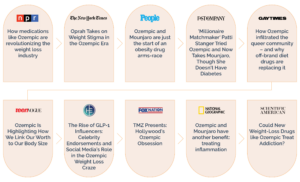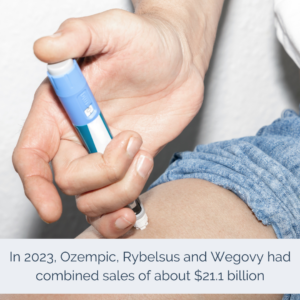There’s a Cultural Shift Taking Place in Defining a Life Well Lived
During the greed-fueled 1980’s “he who dies with the most toys wins” was a popular mantra, and a collection of possessions was often the measure of success.
- Luxury brands catered to this philosophy and expanded their reach by introducing more affordable mass market luxury brands.
- McMansions were in vogue, as well as the gadgets, cars, clothes, toys, and all the other accoutrements needed to fill them.
By the early 2000’s, driven primarily by the Millennial mindset that was shaped during the age of information and the rise of social media, “she who dies with the most experiences wins” better described the metric many used to define accomplishment, and the experience economy boomed.
- The entertainment, food, and travel industries fulfilled many Millennial demands.
- The minimalist and eco-conscious movements both gained in popularity, as well as the goods and services tailored to them, because they resonated with Millennial values.
Today, “they who die with the most happiness wins” best summarizes the approach to a meaningful and full life.
- Spawned by the pandemic and the realization of how important all aspects of health are to happiness, this shift in thinking is now getting a significant boost from the Ozempic craze.
A Convergence of Trends Set the Stage for the Frenzy
Health, weight loss, and happiness. While each of these trends have been around for some time, and their connection to one another common, semaglutides and similar Rx drugs have facilitated an awakening. Not just in the appeal of looking a certain way, but also in the accompanying mental, emotional, and social benefits, which are essential for health and happiness.
The Skinny on Who’s Interested in GLP-1s
Gitnux reports:
- 66% of all American adults want to lose weight.
- 63% are actually overweight/obese.
- 36% of adults are obese; 17% of children (ages 2-19) are obese.
- 63% are actually overweight/obese.
Per a recent CivicScience Ozempic & GLP-1 Trends Tracker:
- Users and intenders of Rx weight loss drugs skew more toward women and Gen Z adults aged 18-24.
A small sampling of current headlines mentioning Ozempic, GLP-1, or semaglutides exemplify just how many different audiences, interest groups, and sectors are engaged in the conversation (and what may be of interest):

Game Changing or Exaggerated Impact?
While the long-term effects of GLP-1s on weight loss companion product markets are uncertain, some companies are seeing early indicators of changes in their business due to the Ozempic craze or believe there could be an effect at some time, and are thus innovating and positioning for the future (overtly and inadvertently).

7 Industries that May Experience Change, Projected Growth & the Trendsetters
- Prepared Meal Delivery: estimated at $13.6 billion in 2023; projected to grow to $28.26 billion by 2028; CAGR of 15.9% during the forecast period.
- Daily Harvest admits its GLP-1 collection is more strategic marketing than a reaction to declining sales, but catering to consumer demand, rather than trying to create it, is their goal with this new offering.
- Analysis
- Daily Harvest’s strategy could work well for products/services already providing what those losing weight need, be it prepared meal delivery or any other industry, as what’s core to the brand does not change, only the marketing.
- Wearable Health-Tech: estimated at $40.7 billion in 2023; projected to hit $69.2 billion by 2028; CAGR of 11.20% during the forecast period.
- Nutrisense appears poised to capitalize on the growth in wearable tech with its metabolic health tracker that combines an at-home continuous glucose monitor (CGM) with a subscription service app and personalized nutritionist support to aid in both the weight loss journey and its continued maintenance.
- Analysis
- Nutrisense has created a strong companion product for the Rx weight loss boom (and beyond), and offers other companies looking to operate in this space a solid model to follow:
- Affordable – through a partnership with Freestyle Libre for the CGM, Nutrisense delivers the full package at a reasonable cost, something home health devises/wearable tech must be cognizant of to gain significant market penetration.
- Personalized – precise metabolic monitoring is delivered via the apps gen AI providing users custom health recommendations (an element that’s more or less the price of entry in health-tech today).
- Data + Human Component – with 1:1 nutritionist support, Nutrisense offers a social connection of sorts, which as noted above, is key to health and happiness, and most likely will translate into customer satisfaction, and therefore longer subscriptions.
- Nutrisense has created a strong companion product for the Rx weight loss boom (and beyond), and offers other companies looking to operate in this space a solid model to follow:
- Juice & Smoothie Bars: estimated at $12.6 globally in 2023; projected to reach $23.08 billion by 2030; CAGR of 9.3% during the forecast period.
- Smoothie King’s weight management lineup is not new, but the franchise experienced record sales in 2023, attributed primarily to its menu innovations that continue to deliver on consumer demand for clean products that aid in their health and fitness journeys.
- Analysis
- Juice and smoothie bars should inherently already cater to the Rx weight loss companion market, but are there factors beyond the menu (or marketing) that could bolster appeal? Potion size, partnerships, “happy hour” specials, increased personalization, scientific support, and more interesting atmospheres are just a few of the things to consider.
- Dietary Supplements: estimated at $ 68.2 billion in 2023; project to be $163.66 billion by 2033; CAGR of 9.1% during the forecast period.
- Codeage’s GLP-Harmony Companion+ is a probiotic overtly marketed as a supplement to Rx weight loss drug users.
- Analysis
- Like Daily Harvest, Codeage was already manufacturing/selling products that directly support GLP-1 agonist users, so this new edition to the company’s arsenal is just smart marketing.
- Additionally, however, the Codeage brand appears laser-focused on a single consumer audience – Gen Z – which should provide them with an additional point-of-differentiation within the arena of Rx weight loss companion products now, and position them as a preferred partner to this segment for years to come as the generation matures.
- Health & Fitness Clubs: estimated at $112.17 billion in 2023; projected to drive $202.78 billion globally by 2030; CAGR of 8.83% during the forecast period.
- Remedy Place, a social wellness club, was founded upon the understanding that lifestyle changes (e.g., giving up alcohol) often affect social lives. The club’s premise is thus simple: enhancing health and social life through human connection and self-care.
- Analysis
- The concept is a natural companion to prescription weight loss as it addresses not only the physical benefits gyms and recovery clubs can deliver, but also the social component that health and happiness require.
- Non-Invasive Aesthetics Treatments: estimated at $6.78 billion in 2023; projected to reach $14.66 billion by 2033; CAGR of 7.9% during the forecast period.
- truBody’s truFlex muscle stimulation, Merz Pharma’s Ultherapy, and Current Body’s in-home LED Light Therapy Face Mask are just a few of the players providing treatments for the skin sag rapid weight loss (and aging) causes.
- Analysis
- The convergence of aesthetics and mental health is apparent in these procedures and gadgets as they’re promoting subtle enhancements for happiness rather than drastic transformations for vanity. Overall, however, they’re still too expensive for most people.
- Innovators capable of delivering similar efficacy and satisfaction, much like what mass luxury brands did in the 1980’s, will most likely better satisfy Rx weight loss users’ requirements.
- Beauty & Personal Care Products: estimated at $ 525.61 billion in 2023; projected to become $659.32 billion by 2028; CAGR of 4.64% during the forecast period.
- BeautyStat, founded by a cosmetics chemist, offers premium quality ingredients in its skincare lines that have been scientifically proven to be effective. Combined with the company’s technology, they are not afraid to overtly take on Ozempic face.
- Analysis
- Clinical credibility, boosted by the founder’s scientific background, the affordability of the products, and a clear stance on which of the company’s offerings will be effective to aid with rapid weight loss, all gives BeautyStat a highly competitive strategic differentiator in the crowded beauty & personal care companion product market.

Where’s the White Space: 3 Ideas to Spark Conversation
The thoughts below only begin to scratch the surface of the additional companion product market opportunities Ozempic and other GLP-1s have aided in uncovering.
- Dating Services: estimated at $7.88 billion in 2023; projected to net $8.96 billion by 2029; CAGR of 1.91% in the forecast period.
- With niche dating platforms being the trend, due to their ability to provide a more bespoke experience, there should be space for a new service that could pair current/former GLP-1 users so social limitations would not be a barrier to finding a match.
- Partnerships with restaurants, entertainment venues, and the like also catering to Ozempian’s could add value, as well as garner a premium for subscription to the service.
- Digital Health: estimated at $375.99 billion in 2022; projected to grow to $1,965.30 billion by 2030; CAGR of 23.3% in the forecast period.
- Being outside in nature is proven to improve mental and physical wellbeing, as well as happiness. But is there an app for that?
- While it appears research in digital ecotherapy may be in its infancy, what has been done shows the field has promise.
- Sexual Wellness: estimated at $11 billion in the US in 2023; projected to reach $20.1 billion by 2030; CAGR of 7.91% in the forecast period.
- Thinner, healthier, happier people (that spend more time in nature) will in all likelihood have more sex.
- Beyond condoms, personal lubricants, and toys, sextech may be a perfect companion market to Rx weight loss, as it can also tackle a health topic that has been shamed, particularly for women.
New Realities & Expanding Horizons are Visible in the Rx Weight Loss Companion Products Market
The jury may still be out on the long-term impact semaglutides, and other Rx GLP-1 drugs may have on the weight loss companion products market (as well as other health conditions the drugs may treat and the associated goods and services that will be developed in conjunction – which will be tackled in a follow up article). What is clear though is these drugs have helped usher in a wake-up call of sorts. People are seeking health and happiness in life, and the companies that can genuinely assist in this pursuit will be financially rewarded.
_________________________________________
Interested in learning more about how to differentiate your product or capitalize on the opportunities outlined in this article? Drop us a note at hello@migrationmarketing.com with the subject line: Blog Inquiry.
_________________________________________
About the Author
Carol Maggio is a Senior Consulting Strategist at Migration Marketing.
The author wishes to thank Shantelle Wasag and Sandy Chase for their contributions to this article.

